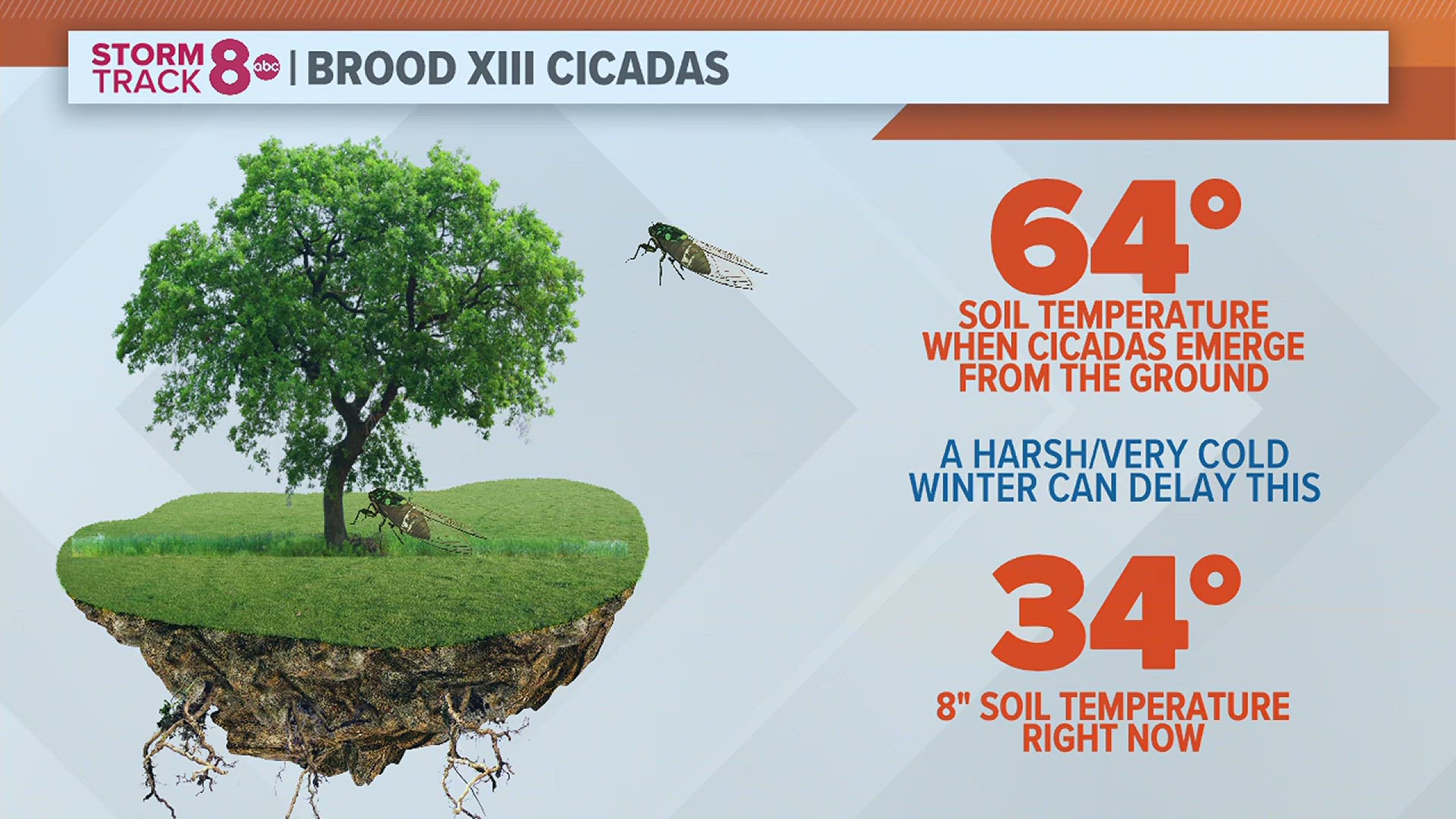MOLINE, Ill — Get ready to see and hear quite a symphony of sound this upcoming summer as a rare double emergence of cicadas will take place across Wisconsin, Iowa, Illinois, and Missouri. While this won't be the first time that two broods of cicadas have emerged in our region, it will be the first time in nearly 221 years that two certain broods will be flying around together in harmony.
Brood XIII and XIX are expected later this spring
Brood XIII (17-year) will emerge in Northern Illinois, while Brood XIX (13-year) will emerge in parts of Missouri, Central/Southern Illinois, and other parts of the southeast U.S. These broods are called periodical cicadas because of their long life cycle. After hatching, the immature cicadas feed on tree roots for 13 to 17 years underground. After this period, they emerge as adults.
How our winter impacts the population
The timing of their emergence relies heavily upon the temperature of the soil. Cicadas typically burrow anywhere between 10-12 inches below the soil. Based on past soil temperature data, we would expect temperatures in the lower to middle 60s at that depth here in the Quad Cities by the time we reach mid to late May.
The soil remains mostly unfrozen so far this winter thanks to warmer temperatures in December and lots of snow in January. Only light amounts of frost are being seen in the top layer of the soil, meaning those slumbering cicadas much further down are doing just fine. Even if it were colder with more frost, that would only delay the emergence by a couple of weeks.


No impact on humans
Adult cicadas do not bite or sting humans and do not carry any known diseases. They can however harm young trees when females lay their eggs in the tree's new growth. Using pesticides is not recommended. If you have a young tree that you would like to defend from being used by female cicadas, you can wrap the branches with cheesecloth.
Periodical cicadas are very beneficial to the region. Their emergence from the ground acts as a natural form of aeration. They are also a food source to many predators which can have a positive impact on their populations. After death, their decaying bodies contribute a massive amount of nitrogen and other nutrients to the soil. So, don't kill them!
What you will likely not see
Don't expect to go outside this summer and suddenly be swarmed by millions of cicadas. These are not like mayflies, which produce viral videos showing layers of them on lights, roads, gas pumps, and everything else imaginable. You will notice more of them singing this summer, producing that distinct noise. You'll also see a lot more of their shredded skins stuck to tree branches and other objects.
You can also help track the cicada emergence by visiting cicadasafari.org
Did you know that only adult male cicadas sing? They have structures on the side of their abdomen called tymbals.
Have a question that you would like me to answer for an upcoming Ask Andrew segment? Submit it, here!
Watch more news, weather and sports on our YouTube channel

